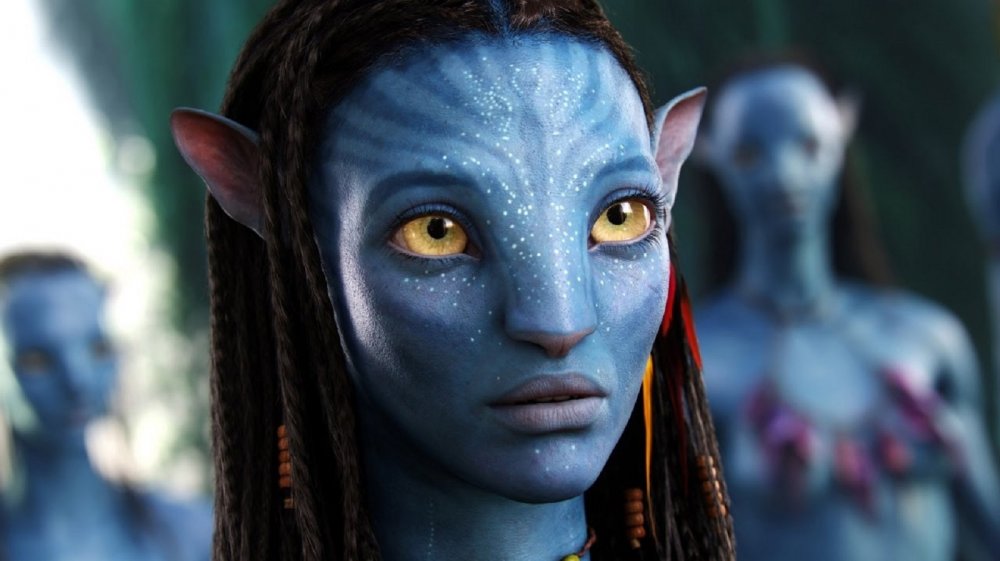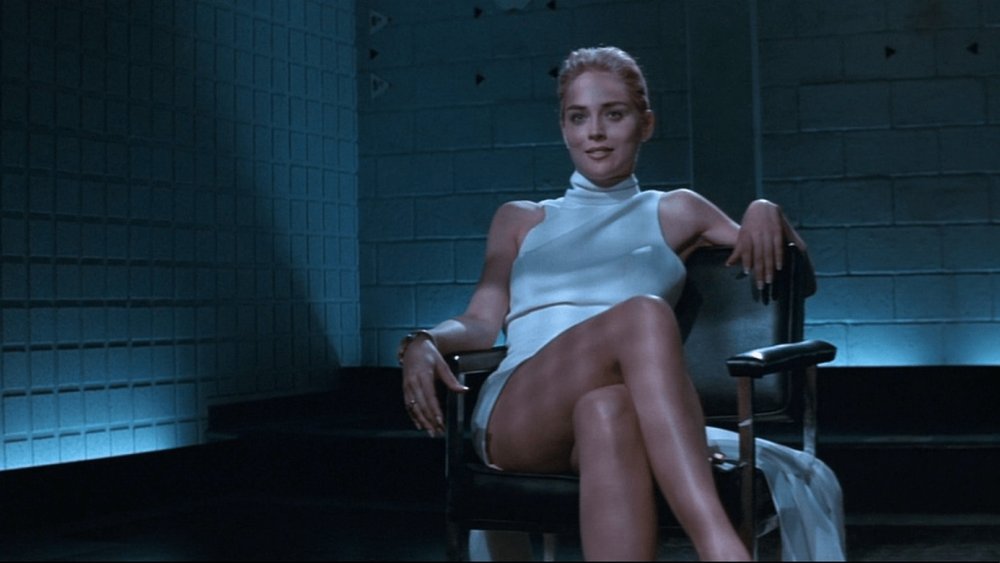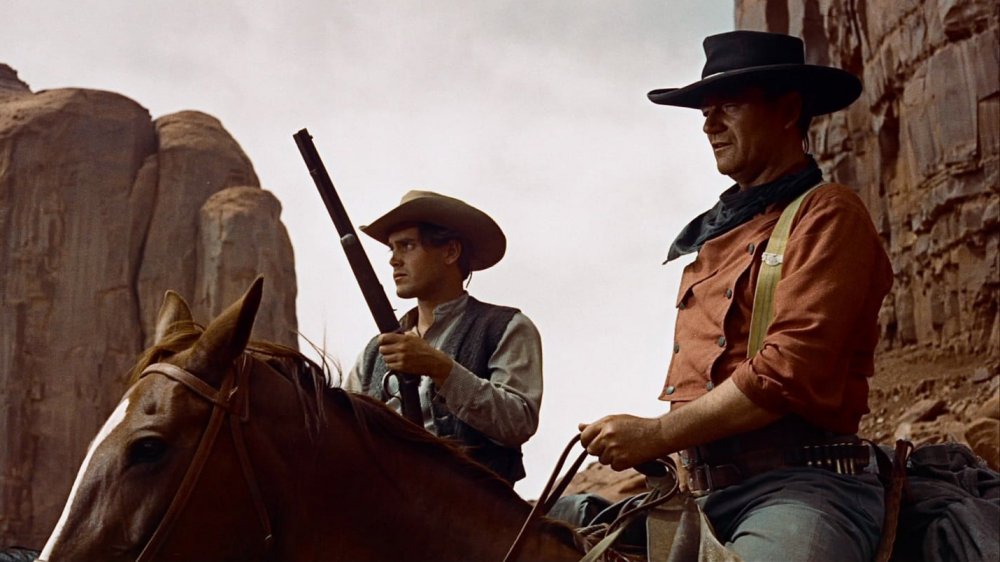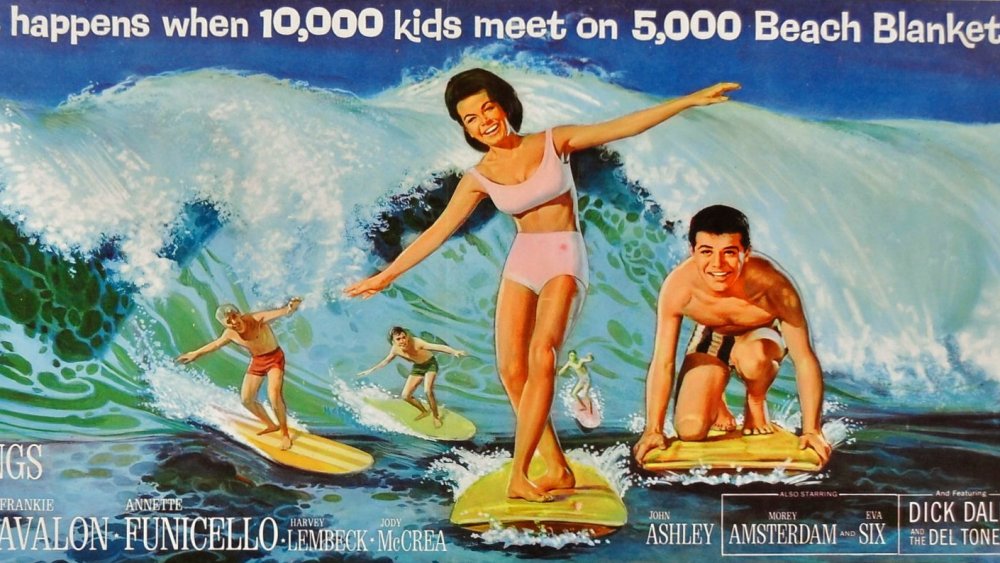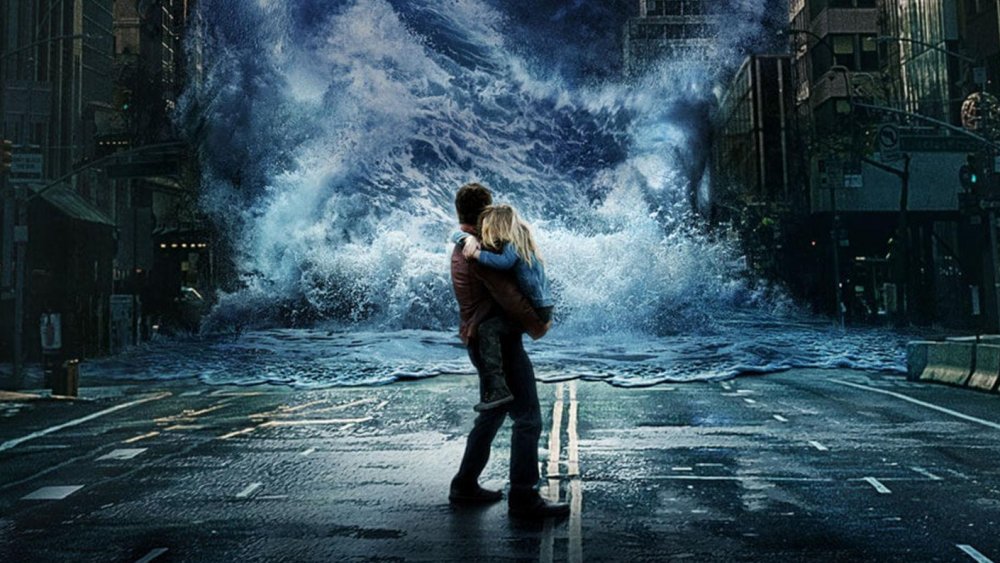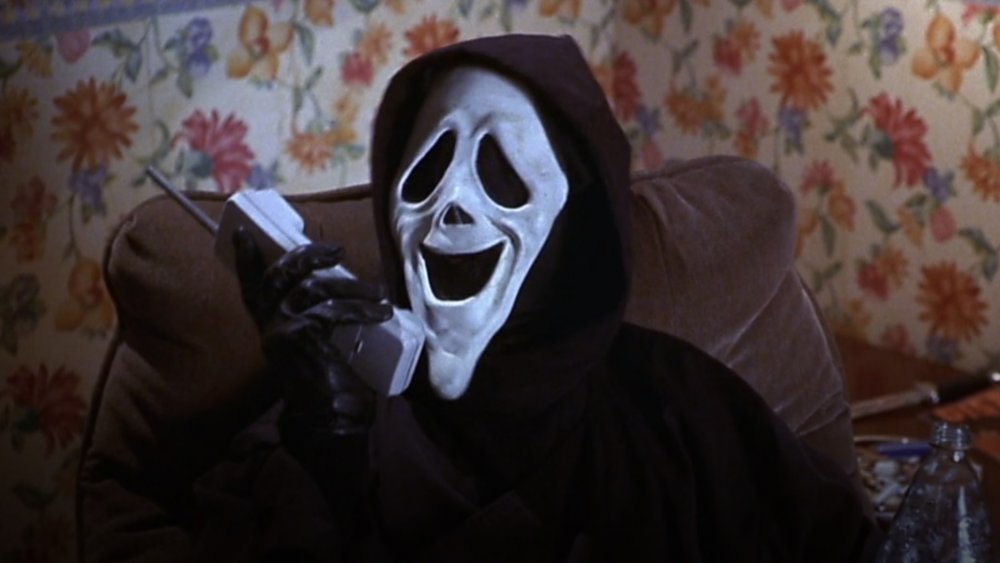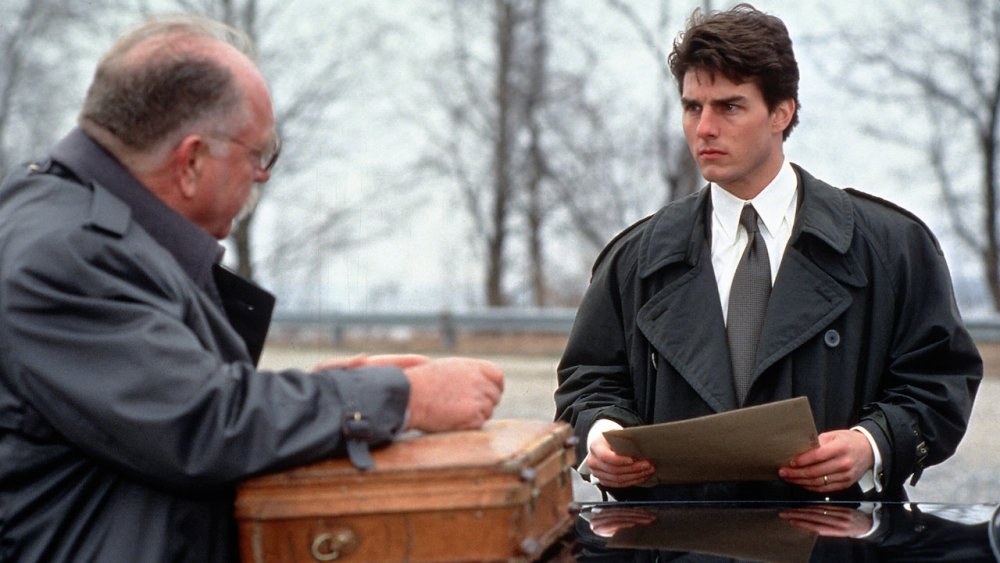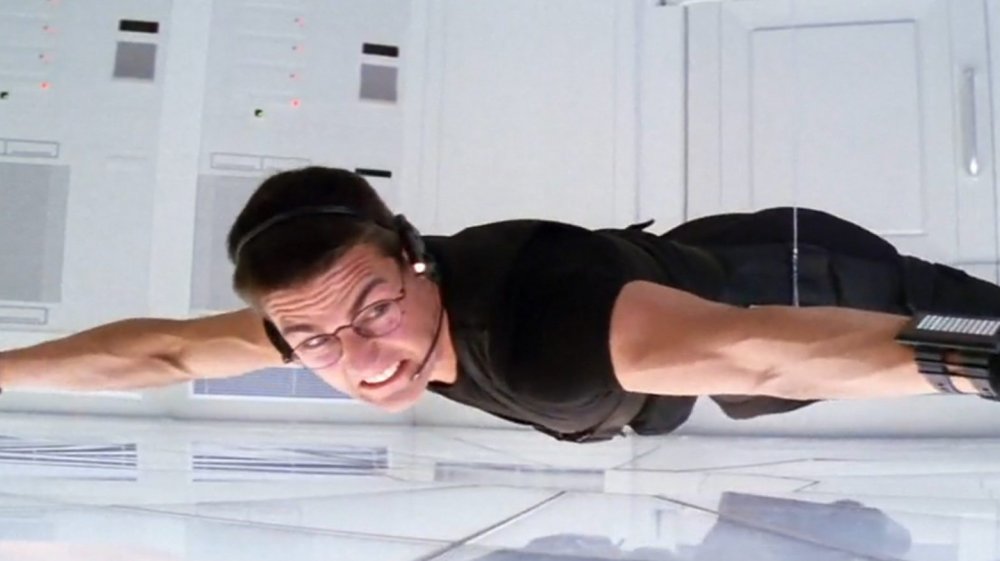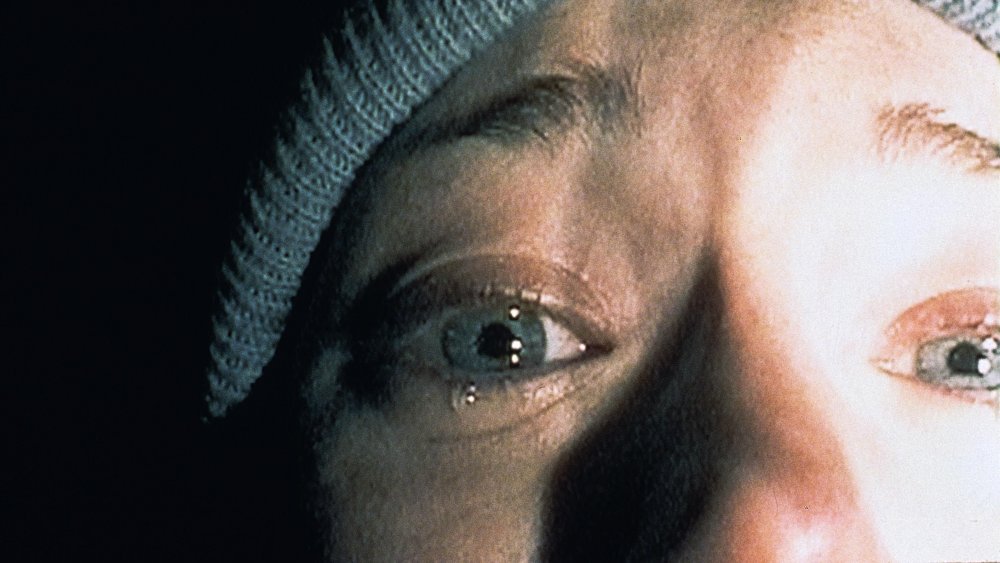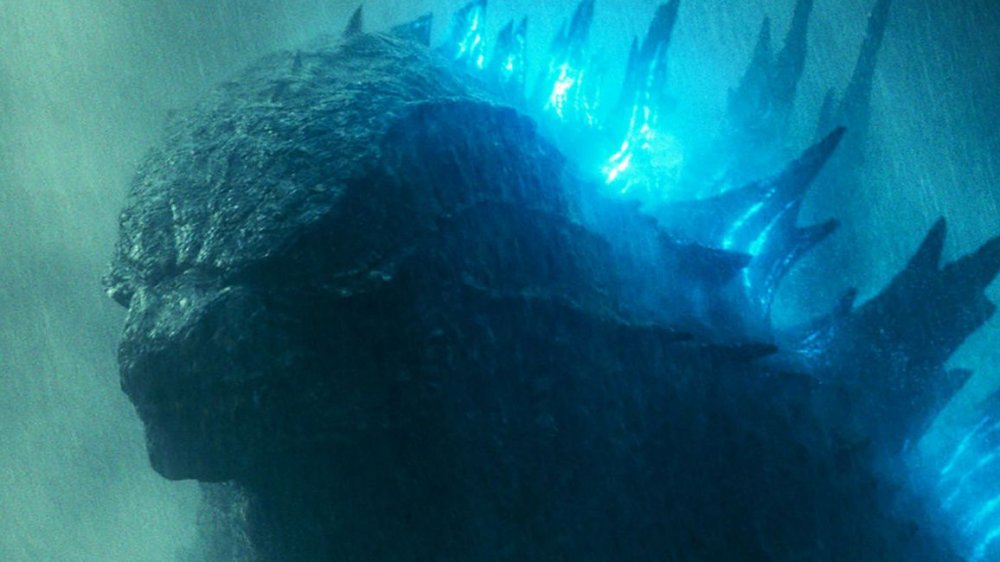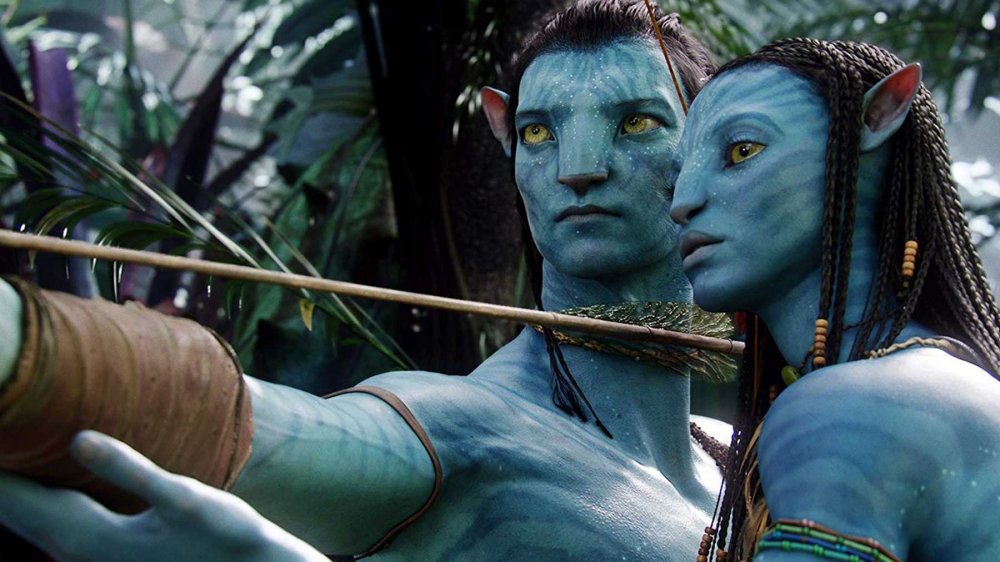Movie Trends That Took Over The Box Office
Author Jack Kerouac once said, "Great things are not accomplished by those who yield to trends and fads and popular opinions." With all due respect to the author of On the Road, that saying doesn't quite hold water when it comes to movie trends. This term refers to periods of time where a specific type of movie was extremely popular at the box office. To be sure, certain trends in cinema only yielded temporary success, and their appeal must be puzzling to modern audiences. Just try explaining to a modern-day teenager the wave of Australian-centric cinema that emerged in the wake of Crocodile Dundee!
But other cinematic trends have produced monumentally successful films, and their impact on the broader culture is still being felt to this day. And it isn't just individual movies from these trends that are worth thinking about. Instead, the trends themselves offer up plenty to ponder. In particular, reflecting on movie trends that dominated the box office can speak volumes to what audiences of a certain era wanted from their entertainment. So, let's take a look at some of these trends and how they managed to become box office titans, whether they lasted for a short while or came back even stronger decades later.
Erotic thrillers made a comeback after owning the '90s
Eroticism sells. It's not only one of the oldest truisms in marketing, it's also an idea that Hollywood has always leaned on. Nowhere was this more apparent than in the 1990s, when erotic thrillers dominated the box office.
"Moviegoers have VHS to thank for the glut of erotic thrillers that arrived in theaters and video stores over the first half of the 1990s," explained Den of Geek. Titles like Fatal Attraction and Basic Instinct turned the genre into a money-making machine in this decade. However, the genre didn't dominate the movie landscape forever. The downfall of the erotic thriller could be attributed to obstacles such as the rise of the internet, as well as networks like HBO. Box office bombs in the second half of the 1990s, like Showgirls, also sullied the genre's name.
However, the erotic thriller fad managed to get a second wind in the middle of the 2010s, thanks to the Fifty Shades trilogy. The three Fifty Shades movies have grossed over $1.3 billion worldwide. Meanwhile, the Netflix feature 365 Days hit the number one spot in Netflix's Top 10 back in June 2020.
The Western genre has left quite an impact on Hollywood
"No other genre's history goes back quite as far as that of the Western," observed The Hollywood Reporter. "The first feature-length film ever released, as recognized by the United Nations Educational, Scientific and Cultural Organization, was the 1906 Australian production, The Story of the Kelly Gang." The Western being such a long-term staple of cinema means that the dusty, bullet-riddled genre contains some of the most iconic movies of all time, like Shane, High Noon, and The Searchers.
Up until the 1960s, it appeared that the Western would always be a staple of the big screen. However, as The Atlantic pointed out, "Over the '50s, '60s, and '70s ... as America enforced its dominion over half the planet with a long series of coups, assassinations, and increasingly dubious wars, the figure of the cowboy grew darker and more complicated." And as the Western grew more complicated with the rise of Clint Eastwood-style antiheroes, audiences turned to summer blockbusters for their light entertainment, leading this trend to decline.
However, the last decade has seen a renaissance for the Western thanks to films like True Grit and Django Unchained. Granted, box office flops like The Lone Ranger and Cowboys & Aliens prove the modern incarnation of Westerns isn't bulletproof. However, decades after it seemed to be down for the count, the Western is still able to wrangle up successful box office more than a century after The Story of the Kelly Gang.
The beach party trend was a whole lot of fun
Kicking off with the Annette Funicello vehicle Beach Party in 1963, the beach party trend was described by Open Culture as a genre made of "formulaic and harmless surf'n'fun films sold to teens, set in a world with very few adults, and most probably starring Frankie Avalon and Annette Funicello as the central will-they-or-won't-they romantic couple."
The producers of Beach Party produced 11 follow-ups to their sleeper hit film while rival studios produced the likes of Surf Party and Palm Springs Weekend. The appeal of these films was simple in that they indulged in specific teen interests (like surfing and popular music) while giving them something upbeat to watch. As Closer Weekly put it, "Letting teens feel they were at a real party was what made these silly films classics." In other words, when kids left the theater, they felt like dancing.
But the dominance of the beach party film provided only temporary. As the 1960s wore on, audiences wanted to see young adults in grittier fare. When the likes of Easy Rider and Bonnie & Clyde began to enter the American film scene, moviegoers traded out sunny escapism for visceral reality. The beach party trend didn't last long, but its ripple effects on pop culture still resonate today. This is most explicitly seen by the recent Disney Channel movie Teen Beach Movie, a beach party homage that instills the hallmarks of the genre into a whole new generation of moviegoers.
Disaster movies have caused havoc at the box office
In the 1970s, a go-to source of blockbuster escapism was the star-studded disaster movie. Airport, The Towering Inferno, and The Poseidon Adventure are quintessential examples of this trend. So why were these films so appealing? Well, as SyFy Wire explained, "Several early big-budget hits, the general unease of the decade, and a spike in bombings, hijackings and other terrifying incidents arguably provided the perfect climate for a seemingly endless string of cinematic catastrophes."
Though the disaster movie was superseded at the end of the decade by all-ages blockbusters like Star Wars, it got a new lease on life in the 1990s. Groundbreaking visual effects technology allowed massive calamities to be rendered like never before. Volcanoes, meteors, and twisters all threatened everyday people in this decade while generating massive paydays at the box office. However, as the new century began, disaster movies didn't vanish, but the trend did decline in prominence as Hollywood's priorities for big-budget fare shifted. The likes of Armageddon may have been lucrative, but they didn't spawn franchises like then-newbie blockbusters Lord of the Rings and Harry Potter.
Still, just because they're not omnipresent doesn't mean disaster movies have gone extinct. The likes of 2012, San Andreas, and Geostorm have been successful enough to show that the disaster movie trend still has life left in it. As The Telegraph put it, "The genre had always been a little disreputable, and its popularity tended to flare up around times of social unrest." In these uncertain times, disaster movies may just rock Hollywood once again.
Spoof movies crack us up ... sometimes
"Ever since Abbott and Costello first met Frankenstein in 1948, Hollywood has excelled at the spoof movie," wrote The Independent in 2009. And it's true — spoof movies have been a regular fixture for decades, particularly during the 1970s. In this decade, Airplane! and the works of Mel Brooks took the genre soaring to new levels of production value and comedy. The trend made a major comeback at the dawn of the 21st century with Scary Movie. Taking aim at slashers like Scream and I Know What You Did Last Summer, Scary Movie killed at the box office, taking home a whopping $277 million against its $19 million budget.
The spoof movie trend was now back in a big way. Not only did several more Scary Movie sequels debut in the years that followed, but director Aaron Seltzer and Jason Friedberg briefly began producing parody films like Epic Movie on an annual basis. However, the spoof movie trend began to die down again once the 2010s began. Scary Movies 4 made $90.7 million domestically in 2006, while Meet the Blacks grossed just $9.1 million ten years later in 2016. The spoof movie resurgence winding down is due to changing times. "Audiences are consuming content on a daily basis which lampoons pop culture and real-world news as it's happening," BoxOffice.com senior analyst Shawn Robbins said to TheWrap. "In the social media age, most straight-up parody films cannot capture that zeitgeist anymore."
Courtroom dramas earn big bucks and critical acclaim
Many of the trends explored on this list dominate the box office but make little impact come award season. This isn't true for courtroom dramas. This long-standing staple of Hollywood has managed the feat of impressing both audiences and Oscar voters. Anatomy of a Murder, 12 Angry Men, To Kill a Mockingbird — the list goes on and on when it comes to universally beloved movies that involve lawyers, judges, and juries.
The genre got an extra spike in popularity, though, in the 1990s. "America's fascination with the courtroom was coming to fruition in the early 1990s because, at the tail end of the 1980s, countless Americans were consuming various law-related books," wrote critic Brandon Sparks on Medium. With an avalanche of works by the likes of John Grisham to adapt, Hollywood produced a number of hit movies like The Firm and A Time to Kill.
In the 21st century, the courtroom drama cooled, mostly because Hollywood moved on to new properties to adapt. In the wake of Harry Potter and Lord of the Rings, young adult novels and fantasy literature became the go-to books to adapt for the big screen rather than courtroom dramas. Still, the trend's popularity was so immense in the 1990s that it could never vanish entirely. In the last decade, hits like The Lincoln Lawyer and Just Mercy have reaffirmed that the courtroom drama can still bring in both acclaim and notable box office grosses.
There was a huge trend of adapting TV shows into movies
Hollywood loves taking established properties and turning them into feature-length movies. It's no surprise, then, that there's a long history of TV shows being adapted into live-action films. This trend, however, didn't become extremely prominent until the last decade of the 20th century. "Television-based films didn't really come into their own until the 1990s," noted Cinelinx, adding that the decade delivered a "whole slew of films based on 1960s television programs to appeal to the people who had grown up watching them."
The likes of Mission: Impossible, Maverick, and The Addams Family all proved that adapting TV shows into big-budget movies could make for big business. The trend continued into the 2000s with an abundance of titles ranging from Charlie's Angels to Miami Vice to Get Smart. However, in the last decade, save for 21 Jump Street, the trend has fallen back in prominence. Partially, this is due to a handful of box office non-starters like The A-Team, Baywatch, and CHiPS.
The way Hollywood exploits old TV brands has also shifted. Previously, a popular sitcom like Full House would've been turned into a movie decades after it went off the air. Now, the brand gets exploited decades later through a Netflix continuation. Programs like Fuller House are the modern way of invoking people's nostalgia. However, that doesn't mean the trend of adapting TV shows is totally dead. Just ask Mark Wahlberg's upcoming The Six Billion Dollar Man blockbuster.
The found-footage trend terrified audiences
The Blair Witch Project wasn't the first movie in the found-footage genre. However, it was the first to bring this genre into the mainstream. As The New York Times explained, "A feature-length film made of spliced together scenes of shaky home video footage ... made the demise of its three characters seem all the more authentic and terrifying. Of course, the whole thing was fiction. But a lot of viewers didn't know that going in."
Grossing $129 million domestically, The Blair Witch Project proved that found-footage movies could make big money. The one-two punch of Cloverfield and Paranormal Activity confirmed that Blair Witch was no fluke. The use of found footage in these films was widely praised, with Roger Ebert observing that Paranormal Activity's scares being "witnessed by a static camera, makes them eerie, especially since there are some shots that seem impossible without special effects."
Soon, the found-footage genre began to dominate the mainstream horror scene, though not all of them garnered Blair Witch's level of acclaim. Many of them felt like cheap cash grabs, complete with thin screenplays and bad acting, while also relying on jump scares to keep audiences engaged. Today, this cinematic trend has evolved to stay relevant, trading recording footage on camcorders for recording footage on desktop screens in films like Searching and Host.
The creature feature will never die
Creature features have been a staple of cinema since the medium was born. However, over the years, there have been periods where creature features didn't just exist in the cinematic landscape, they dominated it. The initial wave of creature feature popularity came after the first King Kong debuted. With its impressive stop-motion animation, this 1933 classic was a huge leap forward for special effects, and its island full of giant monsters absolutely fascinated movie audiences. In the years after King Kong, a sequel (Son of Kong) and knock-offs would follow. And alongside Kong, the initial wave of the Universal Monsters (Dracula, Frankenstein, The Wolf Man, etc.) reaffirmed the popularity of big-screen monsters.
An even greater impact was left by the original Godzilla in 1954, which went beyond spawning a handful of imitators. Godzilla established the norms for the tokusatsu film (a Japanese genre driven by special effects) while also cementing the appeal of creature features. This trend once again took over movie theaters in the 1970s thanks to the massive success of Jaws. As a result, there were movies about killer bears, killer whales, killer piranha, and even killer bees. The popularity of the creature feature has kept on going even into the past decade. Pacific Rim, Rampage, and the various entries in the MonsterVerse are the newest examples of the enduring appeal of the creature feature trend.
The 3D movie trend made billions before dying out
The trend of 3D dates all the way back the 1950s, with a movie called Bwana Devil. However, 3D wouldn't become a ubiquitous trend until the 21st century, when a new and improved version of the format was born. Endorsed by filmmakers like Peter Jackson and James Cameron, this new technology, known as digital 3D, was seen as the way of the future. The record-breaking box office of Avatar seemed to turn this notion into a reality. "New technologies have greatly improved the visual experience, and massive box office returns justify the cost of upgrading theaters with 3D-capable projectors," observed IGN in April 2010.
But much like previous fixations on 3D, the trend of digital 3D wasn't meant to reign supreme over the box office forever. In the wake of Avatar, a rash of films like Clash of the Titans and The Last Airbender were hastily converted into digital 3D, souring audiences on the technology. By August 2011, Slate observed, "The profitability of 3D cinema had dropped since the start of the vogue several years earlier, and more recent films were barely breaking even on their 3D screenings." Years later, IMAX CEO Greg Foster (via SlashFilm) remarked that domestic IMAX screenings would lean towards 2D which "consumers have shown a strong preference for."
The digital 3D trend has died out, but it could return to prominence once again, perhaps by way of those Avatar sequels.
